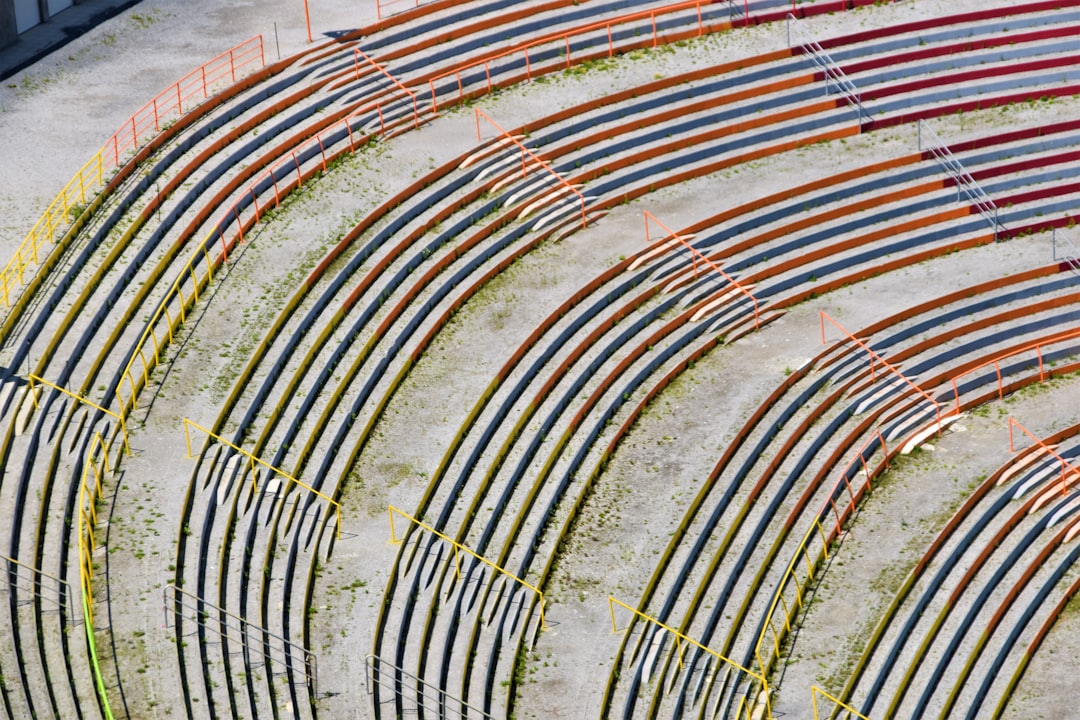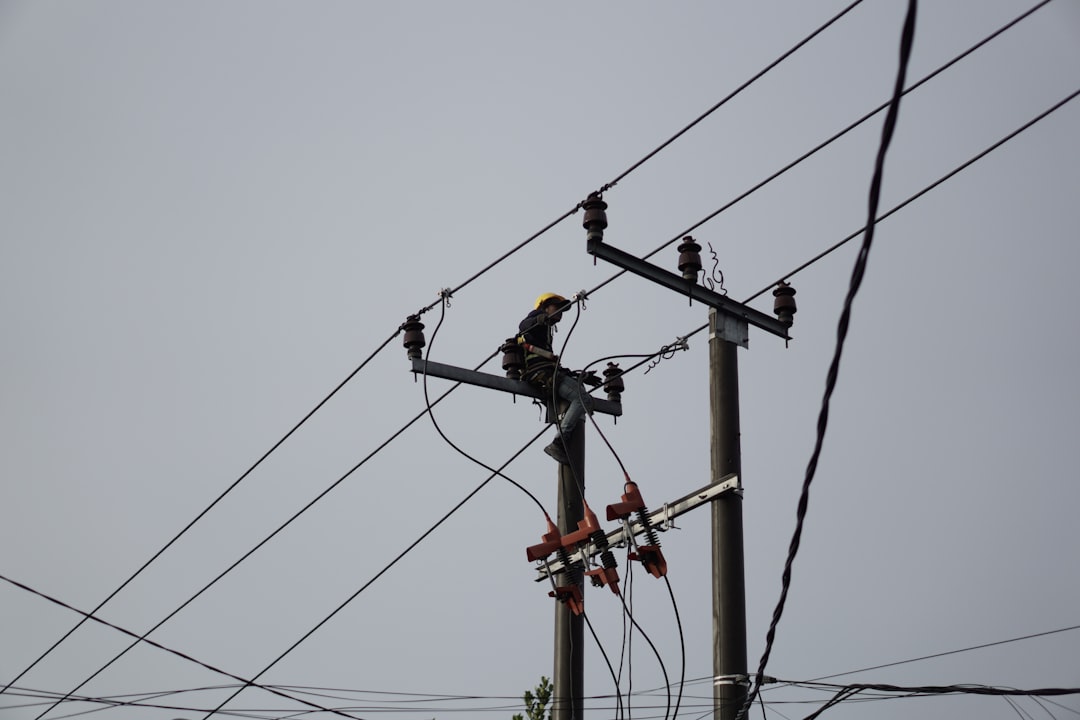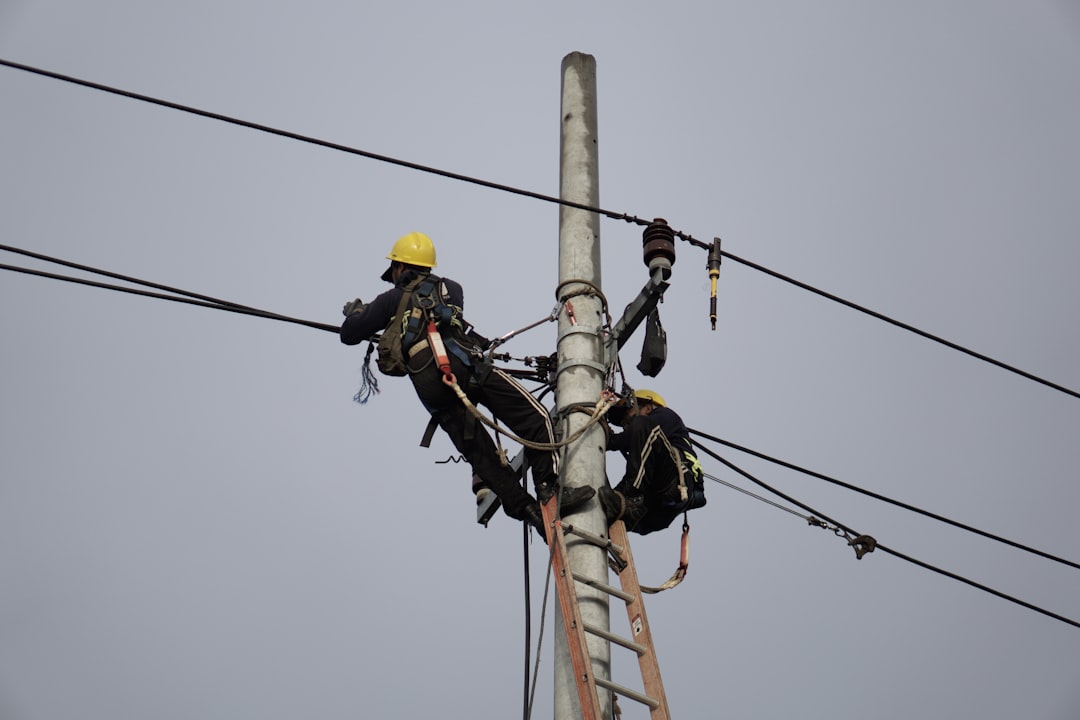

Engage prospects with a scan and streamline customer engagement with FREE QR code marketing tools by Sona – no strings attached!
Create a Free QR CodeFree consultation

No commitment

Engage prospects with a scan and streamline customer engagement with FREE QR code marketing tools by Sona – no strings attached!
Create a Free QR CodeFree consultation

No commitment
QR codes have become a strategic asset for cable installation contractors seeking to bridge the gap between physical worksites and digital resources. Cable installation projects require seamless information flow: from site surveys to compliance documentation, safety guidelines, permits, and post-installation support. Many contractors face persistent frustrations caused by paper-based workflows and incomplete data, which can lead to missed high-value opportunities, rework, and critical project delays.
QR codes offer contractors an effective way to eliminate analog inefficiencies and empower teams, partners, and clients with easy access to essential information throughout the project lifecycle. With a single scan, field crews, site managers, and inspectors can retrieve dynamic digital resources, submit job site photos, verify credentials, or trigger automated workflows. This elevates productivity, ensures regulatory compliance, and improves client satisfaction by surfacing actionable insights and enabling recognition of high-value leads.
By integrating QR codes into daily operations and client touchpoints, cable installation businesses gain measurable improvements in project tracking, lead generation, and engagement. The sections below detail primary outcomes, best practices, and innovative QR code solutions for modern contractors, including how data-driven platforms can automate and amplify impact to give cable installation businesses a strategic competitive edge.

QR codes bridge the gap between fieldwork and the back office, helping cable installation contractors resolve the pain of fragmented documentation and lost project visibility. When every touchpoint becomes scannable, site activity becomes trackable and auditable, and teams can access information without delay or confusion. This creates a single source of truth that supports better decisions and faster execution.
Replacing analog processes is the fastest path to impact. Printed blueprints that go out of date, clipboard sign-in sheets that get lost, and phone calls to request the latest specifications can be replaced with QR-powered digital resources. Crews can scan a code at a rack, a junction box, or a splice case to retrieve the latest as-built, test results, or the proper torque settings. Inspectors can scan to view compliance documents and time-stamped photos. Project managers can track activity and progress in real time without waiting for end-of-day updates.
For example, a fiber contractor can use QR-enabled digital checklists to replace paper JHA and compliance forms. Each submission instantly updates the project record, notifies the safety manager if a hazard is flagged, and syncs to the CRM or project management system so stakeholders see the latest status without waiting for manual data entry.

Cable installation contractors operate in environments where accuracy, safety, and regulatory compliance are non-negotiable. Complex job sites, frequent changes, and multiple stakeholders increase the risk of misinformation and delay. Many contractors still miss high-value leads and slow projects due to anonymous engagement with print materials and outdated field data that never makes it back to the office.
QR codes help close these gaps by making every surface an access point and every interaction measurable. Technicians get what they need faster. Project managers gain visibility into who scanned what, where, and when. Clients and inspectors receive immediate access to documentation and test results without chasing emails.
This applies across materials that cable installers commonly use: door hangers for new builds, route maps posted at MDFs and IDFs, safety briefings at site entrances, and proposal packets for property managers. A QR code in a direct mailer to a residential builder can link to a live quote calculator. Codes on invoices can link to support workflows or feedback forms. Each keeps the experience simple while providing valuable data for the business.

QR codes can be configured for a variety of purposes across the cable installation lifecycle. Selecting the right type ensures the experience is seamless for the user and measurable for the business. Contractors benefit from a mix of static and dynamic codes depending on the permanence and analytics requirements of the asset.
Dynamic QR codes are typically best for field workflows because they allow content changes without reprinting and enable robust tracking. Static codes can work for evergreen resources like a generic safety handbook or a permanent contact card. In most cases, dynamic codes provide flexibility as scopes evolve.
With a platform like Sona QR, you can generate these formats, manage destinations, and maintain a searchable inventory of codes for all assets and campaigns. This reduces version confusion, increases agility, and keeps your data centralized for analysis.

Growth stalls when the activity around your work is invisible or anonymous. QR codes activate high-impact touchpoints, tying offline moments to measurable digital behaviors. The best placements are where your crews, clients, and prospects naturally look for information or assistance. Thoughtful CTAs convert curiosity into action while letting you observe what resonates.
Invest time in mapping your physical environment and the typical journeys of field staff and clients. Place codes at predictable locations with clear value propositions. Make them durable for outdoor conditions and easily replaceable if codes evolve.
Smart deployment transforms every touchpoint into an insight engine; see update your QR strategy as best practices evolve. You learn where questions arise, which content is most used, and how prospects prefer to engage. From there, you can refine content and placements to drive more scans and conversions.

QR codes deliver value in both operations and growth. The strongest use cases are tightly aligned with common field actions, client expectations, and compliance needs. Each use case should have a clear action and a measurable outcome so you can track performance.
These scenarios counter incomplete engagement, reduce the risk of churn, and ensure accurate recordkeeping. By measuring scans, submissions, and follow-on actions, your team can quantify improvements like shorter closeout cycles, higher inspection pass rates, and increased conversion from proposal to project.
Each QR code scan is a data signal that captures intent, context, and timing. By deploying distinct codes across touchpoints, you can automatically segment your audience and tailor follow-up. This turns previously anonymous interest into known, retargetable audiences for sales and marketing with Sona’s retargeting playbook.
Think about your stakeholders: property managers, general contractors, ISP partners, facility managers, and homeowners. Each group has different questions and decision cycles. Codes placed in their environments signal their interests by what they scan and when they scan it.
For cable installation contractors, these distinctions can be very specific. For example, property managers scanning proposal QR codes indicate commercial MDU interest, while homeowners scanning door hangers suggest residential drop demand. A GC scanning a safety protocol at a job site indicates an active project, while a builder scanning a capabilities brochure signals future partnership potential.
QR codes are more than convenient links. They connect offline and online campaigns, enabling real-time engagement and richer data collection across every channel you already use. By making each asset scannable, you remove friction for the buyer and add attribution for your team.
A connected funnel for cable installation contractors often starts with offline impressions and moves to digital hand-raisers. As prospects scan and engage, their activity populates your CRM, enabling timely outreach and informed conversations. Over time, you learn which channels generate the most efficient pipeline.
QR codes serve as the offline onramp to your digital marketing engine. They also unlock a new layer of data collection across channels that were once difficult to measure. With a centralized platform like Sona QR, you can manage all your codes, monitor performance, and sync scan data with your CRM and ad platforms to build a more predictable growth engine.
Bringing QR codes into your operations and marketing is straightforward when you follow a methodical plan. The steps below help you align each code to a clear outcome and ensure that field execution and measurement are covered.
Start by aligning QR code deployment to a specific business objective. Clarity at this stage prevents scattershot execution and helps you define success metrics that matter.
Choose the code format and behavior based on your goals. In most cases, dynamic QR codes provide the tracking and flexibility needed to optimize over time.
Ensure your codes are branded, scannable, and clearly explained. Good design and thorough testing remove friction and boost scan rates.
Place codes at high-impact points in your workflow and marketing mix. Align the physical environment with the user’s need at that moment.
Treat every QR code as an instrumented touchpoint. Use analytics to understand engagement and make continuous improvements.
A clear line from every QR scan to business outcome is essential. Without it, you are left guessing which assets drive value and which do not. Strong analytics give you the confidence to invest in the placements and messages that produce the best results.
Start by agreeing on what success looks like for each use case. For field operations, success might be a completed checklist, a passed inspection, or a faster change order cycle. For marketing, success might be a form fill, a booked site survey, or a proposal viewed. Then configure your tools to capture the path from scan to action.
With Sona QR and Sona — an AI-powered marketing platform that turns first-party data into revenue through automated attribution, data activation, and workflow orchestration — contractors can go beyond basic scan counts. You can optimize campaigns using live performance data, automatically enrich CRM profiles, and attribute revenue to QR engagement using identity resolution and journey analytics. This transforms QR codes from a tactical convenience into a core component of your performance and operations strategy.
QR code impact compounds when you combine thoughtful design, smart placements, and automation. Focus on the tips that match your most common media, the buyer journeys you want to support, and the tools you already use.
First, treat QR codes like any other channel that needs a strong CTA, a fast destination, and a clear next step. Second, ensure field teams and clients understand what they will get by scanning. Training and signage make a difference in adoption and outcomes.
Creative deployment examples include QR codes on safety cards for instant emergency procedures, on project handover documents for warranty registration, and on vehicle doors for on-the-spot service verification. In each case, scanning is not the goal on its own; the goal is the action that follows and the insight you gain.
For cable installation contractors aiming to excel in today’s competitive marketplace, integrating QR codes throughout workflows and customer journeys is no longer optional; it is a strategic necessity. Every scan delivers immediate value, turning informational dead ends into actionable insights while raising the bar for safety, compliance, and client satisfaction. By embedding QR-based solutions at critical touchpoints, contractors address key industry pain points, recover missed prospects, surface hidden engagement signals, and ensure project data remains unified and up to date.
The path forward is practical and measurable. Start by picking one high-impact operational use case, such as digitizing job site check-ins and safety briefings, and one growth use case, such as adding QR codes to proposals that link to calculators and case studies. Use a platform like Sona QR to centralize creation, routing, and analytics. As scan data accumulates, expand your deployment to asset labels, direct mailers, fleet signage, and training materials. Over time, this approach future-proofs operations, drives qualified leads, and measurably increases project transparency and revenue. Start creating QR codes for free.
QR codes have revolutionized the cable installation contractor industry by transforming traditional workflows into seamless, data-driven experiences. From streamlining access to job sites and equipment information to enhancing real-time communication with customers, QR codes enable faster, more efficient service delivery and improved client satisfaction. Imagine instantly providing technicians and clients with up-to-date installation details, troubleshooting guides, or service histories—all accessible with a simple scan.
With Sona QR, you gain the power to create dynamic, trackable QR codes that can be updated instantly without the need for reprinting. This means you can adapt on the fly, monitor scan activity to optimize field operations, and connect every interaction directly to business growth. Don’t miss out on turning every scan into a valuable touchpoint that drives customer acquisition and operational excellence. Start for free with Sona QR today and elevate your cable installation services to a new level of efficiency and engagement.
A good cable installation contractor ensures accuracy, safety, regulatory compliance, and seamless information flow throughout projects while effectively using digital tools like QR codes to improve transparency and efficiency.
The article does not specify the cost to hire a cable installation contractor.
Cable installation contractors offer services including site surveys, compliance documentation, safety guideline enforcement, permit management, installation work, testing, post-installation support, and often use QR codes for real-time project tracking and client engagement.
QR codes eliminate analog inefficiencies by providing instant access to digital resources, improve project transparency, support regulatory compliance, accelerate problem solving, enable real-time tracking and analytics, reduce costs and waste, and enhance lead generation and client satisfaction.
While the article does not provide specific methods for finding a contractor, it suggests evaluating contractors who leverage digital tools like QR codes to enhance project management, transparency, and compliance.
Use Sona QR's trackable codes to improve customer acquisition and engagement today.
Create Your FREE Trackable QR Code in SecondsJoin results-focused teams combining Sona Platform automation with advanced Google Ads strategies to scale lead generation

Connect your existing CRM

Free Account Enrichment

No setup fees
No commitment required

Free consultation

Get a custom Google Ads roadmap for your business






Launch campaigns that generate qualified leads in 30 days or less.
